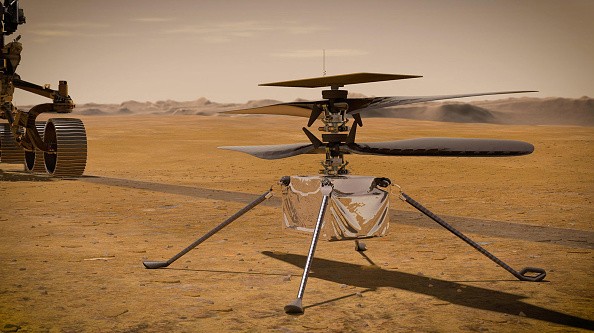If you think drones delivering to homes are impressive, then a small helicopter controlled from another planet is a marvel. After surpassing what's expected from it, the Ingenuity helicopter has flown its last flight after irreparable damage sustained from landing.

NASA Bids the Rotorcraft Farewell
The Ingenuity helicopter was the first aircraft to ever be launched on Mars and was placed inside the Perseverance rover as the two traveled the Red Planet together. Launched in February 2021, the rotorcraft was only expected to last for 30 days after five flights.
It has surpassed expectations and continued to work after 72 flights, and flew 14 times farther than it was intended to. Sadly, ground controllers lost communication with the Ingenuity mid-flight, causing a rough landing.
This led to one of its rotor blades sustaining major damage, bad enough that it could no longer fly again. Since there are no tools to repair it and no access to the craft, there's no way to get it up and running again.
On its last flight, it achieved a maximum altitude of 40 feet and governed for about 4.5 seconds before it began its descent. It was around 3 feet above the surface when ground control lost contact, leading to a fast uncontrolled descent at a velocity of 3.3 feet per second.
After NASA managed to reestablish control, images from the Mars helicopter showed the extent of the damage. The space agency is still trying to determine what caused communications dropout as well as the interference with the rotorcraft's orientation.
NASA officially announced that January 18th, 2024 marks the last flight of the Ingenuity helicopter. "The historic journey of Ingenuity, the first aircraft on another planet, has come to end," NASA Administrator Bill Nelson expressed.
He added that through the Mars helicopter, "NASA is paving the way for future flight in our solar system and smarter, safer human exploration to Mars and beyond," and that helped the space agency make the impossible, possible.
Read Also: NASA Successfully Collects Asteroid Sample Thanks to OSIRIS-REx Capsule
The Ingenuity's Achievements
Built by NASA JPL, the project was supported by NASA's Science Mission Directorate. It managed to stay active for almost 1,000 days, which was 33 times longer than what NASA expected of the Mars helicopter.
It has been through many other challenges like having to deal with a dead sensor, accumulating dust from dust storms, surviving a Martian winter, and performing three emergency landings. It was even capable of choosing landing sites autonomously.
The Ingenuity's role was to scout the terrain of the barren planet along with the Mars rover, partly to learn more about the environment but also to determine whether Mars once had life on it before it earned its name, "Red Planet."
Furthermore, it also helped NASA gain insight into how viable aircraft can be when it comes to exploring other planets. It's safe to say that the Mars helicopter was able to contribute to science, especially since it was operational for far longer than its estimated life span.
Related: NASA Regains Communication With Ingenuity Mars Helicopter After Period of Silence














